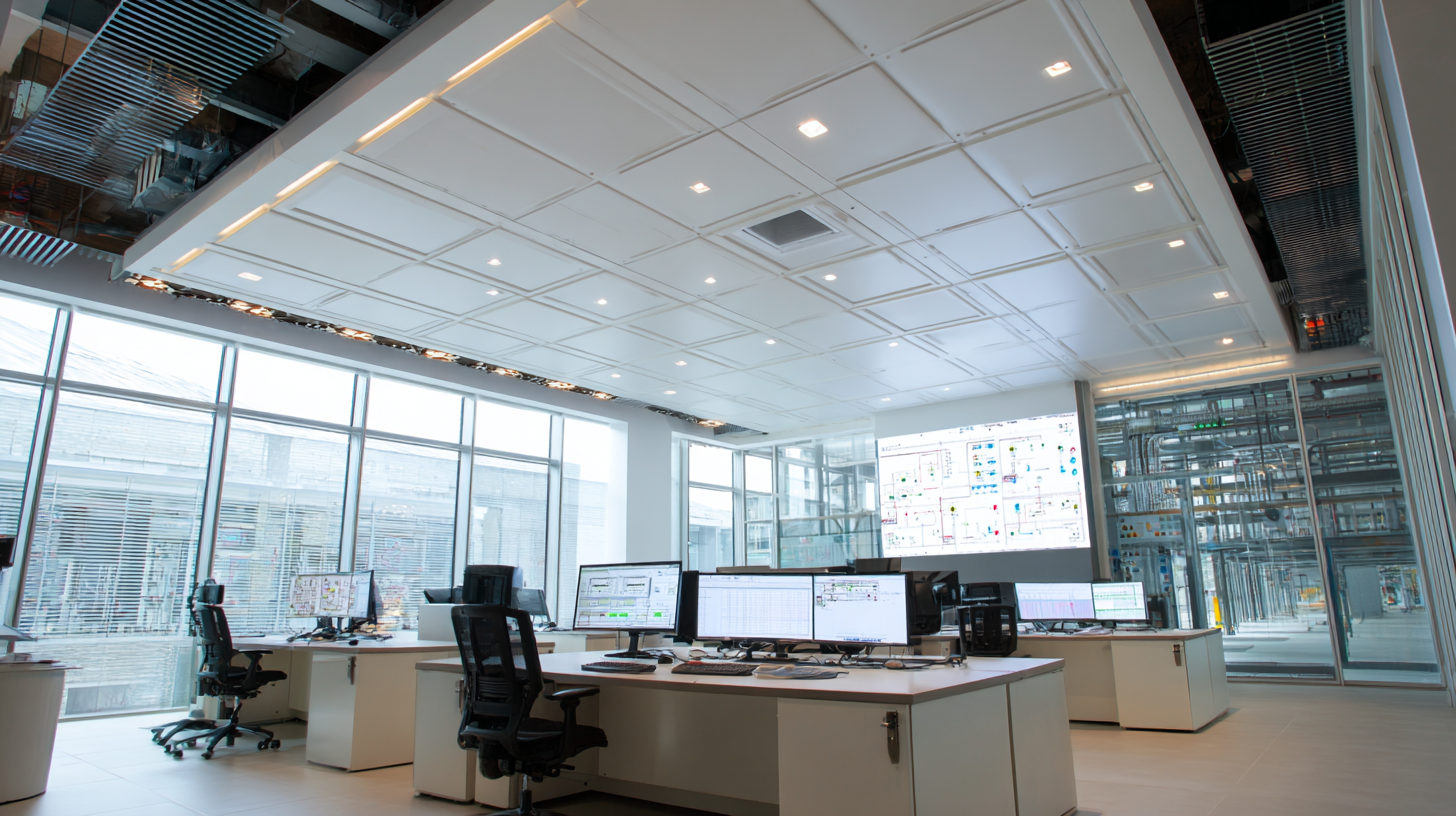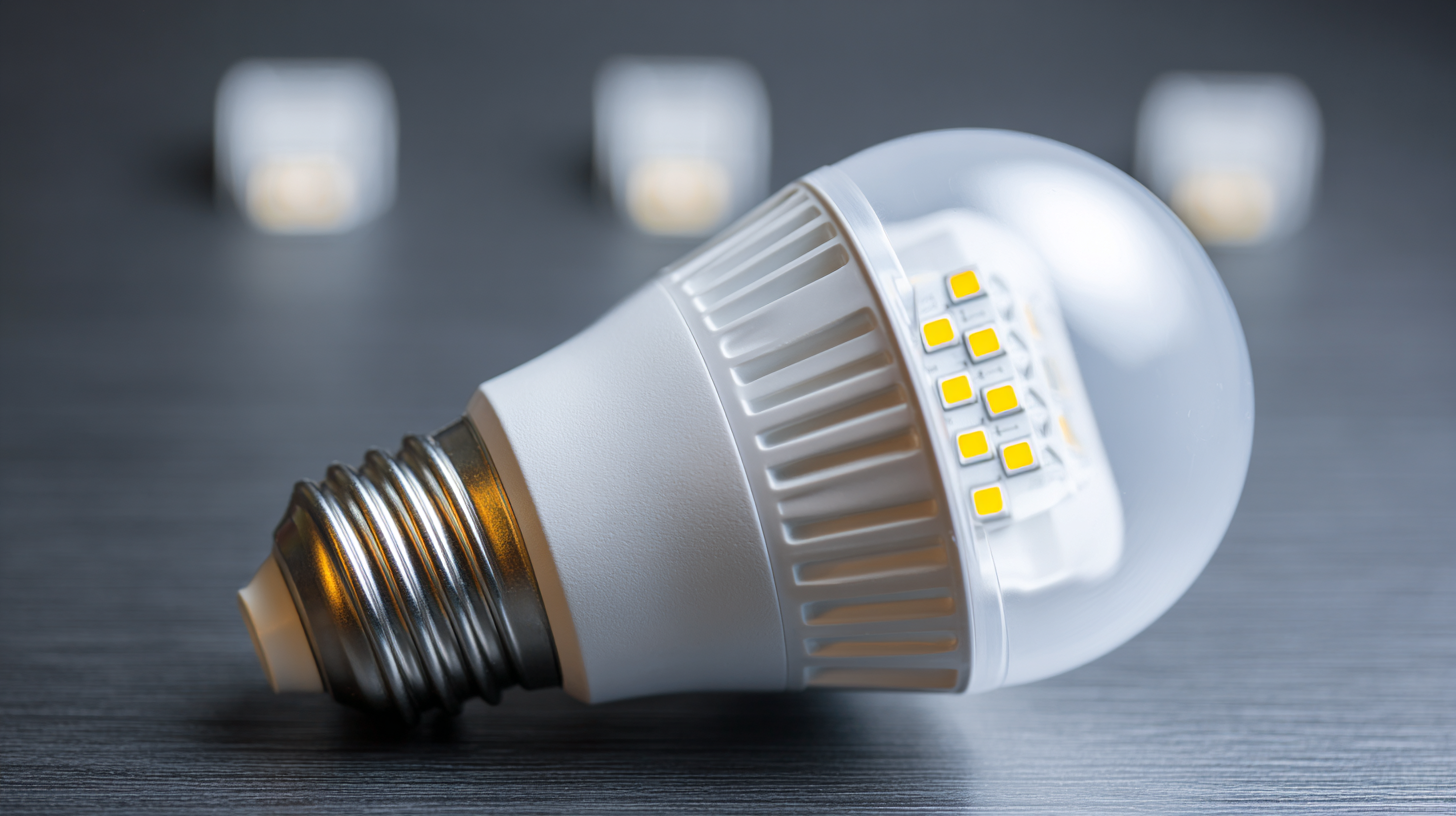Ultimate Guide to Understanding the Technical Specifications of the Best Panel Led
In today's rapidly evolving technology landscape, the demand for high-quality display solutions has seen an exponential rise, with the global LED market projected to reach $143.33 billion by 2027, according to a report by Fortune Business Insights. Among the key players in this sector, Panel Led technology stands out due to its superior energy efficiency and exceptional visual performance. This guide aims to unravel the intricate technical specifications that define the best Panel Led options available in the market, focusing on essential aspects such as brightness, color accuracy, and lifespan. As consumers become increasingly discerning in their choice of display products, understanding these specifications is crucial for making informed purchasing decisions. By exploring top strategies for selecting the ideal Panel Led, we empower readers to leverage the full potential of this innovative technology in various applications, from commercial displays to home entertainment systems.

Key Innovations in Panel LED Technology for 2025
The landscape of panel LED technology is evolving rapidly as showcased at CES 2025, with numerous advancements on display from major companies. This year's event highlighted innovations such as improved color accuracy, energy efficiency, and ultra-thin designs, significantly enhancing the viewing experience. According to industry reports, the global Micro LED market is projected to grow at a CAGR of over 40% from 2025 to 2030, indicating a strong shift towards this pioneering technology due to its superior brightness and contrast capabilities compared to traditional displays.
In Taiwan, there's a noticeable push for innovation within the Micro LED sector, particularly as OLED technology continues to advance. With investments focusing on critical areas like epitaxial wafers and TFT integration, Taiwanese companies are working to solidify their position as leaders in this field. As the demand for high-resolution and flexible display solutions increases, it is imperative that these companies not only enhance their manufacturing processes but also invest in research and development to stay ahead in the competitive market. By 2025, it’s projected that Micro LEDs will capture a significant market share, offering consumers cutting-edge technology that meets the dynamic needs of modern applications.
Understanding Key Technical Specifications of Advanced Panel LEDs
When considering advanced panel LEDs, understanding key technical specifications is crucial for making informed decisions. First and foremost, luminosity, measured in lumens, indicates the brightness output of the panel. Higher lumens mean brighter light, which is essential for environments that require clear visibility. Additionally, color temperature, expressed in Kelvins, plays a significant role in the visual ambiance. Warmer temperatures (around 2700K-3000K) provide a cozy atmosphere, while cooler temperatures (5000K-6500K) mimic daylight and enhance focus.
 Another important specification is the panel's color rendering index (CRI), which measures its ability to accurately reproduce colors. A CRI above 90 is generally preferred in settings like art studios or retail spaces where precise color representation is necessary. Furthermore, energy efficiency, indicated by lumens per watt (lm/W), should not be overlooked. Higher lm/W values signify more light produced per unit of energy consumed, ultimately leading to cost savings over time. By grasping these key technical specifications, consumers can select panel LEDs that not only meet their lighting needs but also enhance their overall environment.
Another important specification is the panel's color rendering index (CRI), which measures its ability to accurately reproduce colors. A CRI above 90 is generally preferred in settings like art studios or retail spaces where precise color representation is necessary. Furthermore, energy efficiency, indicated by lumens per watt (lm/W), should not be overlooked. Higher lm/W values signify more light produced per unit of energy consumed, ultimately leading to cost savings over time. By grasping these key technical specifications, consumers can select panel LEDs that not only meet their lighting needs but also enhance their overall environment.
The Impact of Energy Efficiency Standards on Panel LED Design
Energy efficiency standards play a crucial role in shaping the design and technology of panel LEDs. These standards, often set by government agencies and industry organizations, aim to reduce energy consumption and environmental impact. According to a report by the U.S. Department of Energy, LED lighting uses at least 75% less energy than traditional incandescent bulbs, significantly contributing to energy savings on a national scale. As consumer demand for eco-friendly products rises, manufacturers are increasingly focused on developing panel LEDs that meet stringent energy efficiency criteria, which not only comply with regulations but also enhance their market appeal.

To maximize the energy efficiency of your panel LEDs, consider choosing products with the ENERGY STAR label. This certification ensures that the product meets specific energy efficiency guidelines set by the EPA. Additionally, look for panel LEDs that boast a high luminous efficacy (measured in lumens per watt), as this indicates their effectiveness in producing bright light while consuming less power. For instance, the latest models on the market can achieve efficacy ratings of over 100 lumens per watt, making them an excellent choice for both residential and commercial applications.
Another tip is to opt for panel LEDs with smart technology features. These advancements allow for better control of lighting conditions, such as dimming and scheduling, further improving energy savings. According to the International Energy Agency, integrating smart lighting solutions in buildings can lead to additional energy savings of up to 30%. Investing in panel LEDs with innovative features not only enhances convenience but also reinforces your commitment to energy efficiency.
Emerging Trends in Display Quality and Resolution for 2025 Panel LEDs
As we approach 2025, the landscape of panel LED technology is evolving rapidly, with a keen focus on enhanced display quality and resolution. Major manufacturers are at the forefront of this revolution, integrating mini LED technology into their products, resulting in a significant improvement in brightness, contrast, and overall visual experience.
Mini LEDs, with their smaller size and increased density, allow for more precise local dimming, which means deeper blacks and more vivid colors. This trend is anticipated to dominate the market as consumers increasingly demand screens that deliver not just size, but also an outstanding viewing experience.
Moreover, advancements in resolution are paving the way for 8K displays becoming more mainstream, providing crisp details that cater to high-definition content creators and avid gamers alike.
The ongoing research and development in quantum dot technology also promise to bring about improvements in color accuracy and brightness levels. As these technologies merge, expect a new era where consumer electronics not only meet but exceed the expectations of an increasingly discerning audience. With these exciting developments, 2025 is shaping up to be a pivotal year in the world of LED displays.
Future-Proofing Your Investment: Choosing the Right Panel LED Features
When it comes to investing in a panel LED, understanding its technical specifications is crucial for future-proofing your purchase. One of the key features to consider is the resolution. Higher resolutions, such as 4K or even 8K, not only provide stunning visuals but also ensure that your display remains relevant as content offerings evolve. As streaming platforms and gaming technology advance, opting for a high-resolution panel will prevent the need for an early upgrade.
Another important aspect is the versatility of the display. Features such as HDR support, wide color gamut, and adaptive brightness can enhance the viewing experience while making your panel more adaptable to different environments and content types. For example, HDR allows for deeper contrasts and more vibrant colors, ensuring your screen can display the latest cinematic releases at their best. Similarly, energy efficiency ratings are critical, as selecting a model that consumes less power will save money and resources in the long run. Prioritizing these features when selecting a panel LED ensures that your investment remains robust and prepared to meet future demands.
Ultimate Guide to Understanding the Technical Specifications of the Best Panel Led - Future-Proofing Your Investment: Choosing the Right Panel LED Features
| Feature | Description | Importance | Example Value |
|---|---|---|---|
| Brightness (Lumens) | The amount of light emitted by the LED panel. | Essential for visibility in various environments. | 3000 to 10000 Lumens |
| Color Temperature (Kelvin) | The hue of the light emitted by the panel, affecting mood and visibility. | Important for ambiance and specific tasks. | 3000K to 6500K |
| Energy Efficiency (Wattage) | The amount of power consumed by the LED panel. | Critical for reducing energy costs. | 40W to 150W |
| Lifespan (Hours) | The expected operational duration before the LED panel fails. | Long lifespan minimizes replacement costs. | 25,000 to 50,000 hours |
| Viewing Angle (Degrees) | The angle at which the light is emitted, affecting visibility. | Important for clarity in larger areas. | 100° to 180° |

